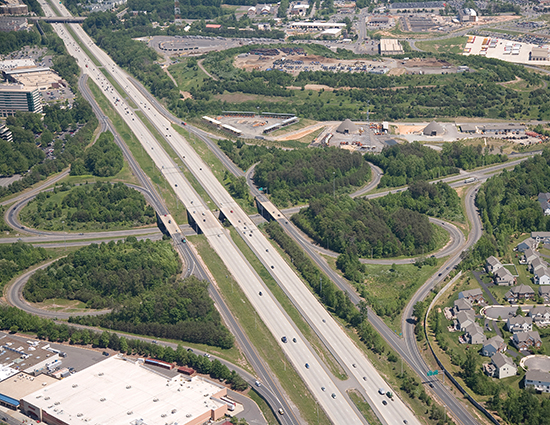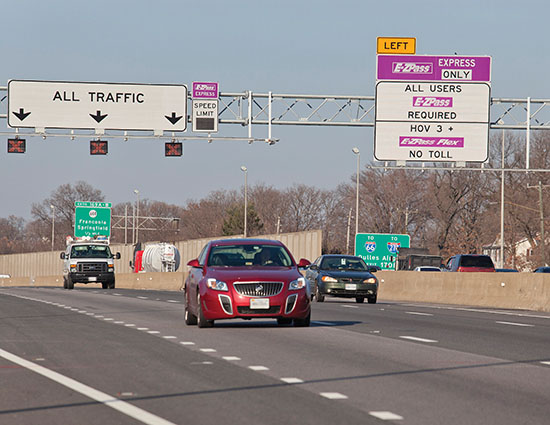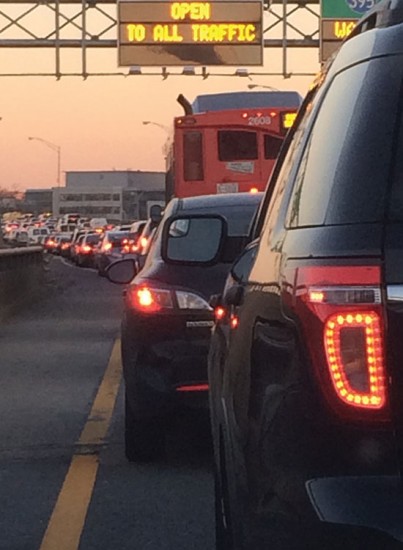
In one of the country’s most congested regions, getting everybody where they want to go safely and reliably is a juggling act of art, politics, science and cultural change. By David Hodes
There is a major disruption happening right now to the Northern Virginia transit system.
Vehicles are talking to the highway, and soon will be talking to each other, with the goal of avoiding problems in the road and making crashes a thing of the past.
Eventually, even the steering wheel will talk—reading body conditions through biometric sensors, sending that data to a traffic monitoring center and reporting if a driver is dozing off or otherwise unable to drive.
The future of a connected, networked highway system will mean a capacity increase of 300 to 500 percent as a result of better road awareness, with express lanes enabling vehicles to travel at high speeds just inches apart. Roadways will even recharge vehicle batteries or provide direct power for vehicle propulsion systems.
This is the vision for a transformation of modern surface transportation as outlined in a report by Jim Barbaresso, national practice leader of intelligent transportation systems at HNTB, a major infrastructure firm in Kansas City. He writes that these smart, connected vehicles will be in place by the end of this decade. Automated vehicles will be introduced then as well.
In Northern Virginia, where explosive development has led to one of the most clogged highway systems in the country, the early stages of that vision are being put into place now because Northern Virginians have traffic-jammed themselves into a corner.
The network is taking shape now. Taking the Metro? Bus? Or just driving? That brings up other choices: Regular lanes? HOV? HOT? Bus? Carpool? Or a combination of all of these?
Choices. That’s what the commonwealth of Virginia, the Virginia Department of Transportation, the Washington Metropolitan Area Transit Authority, the Metropolitan Washington Airports Authority and others are working on.
Together, in a sometimes hard-fought, win-win compromise with local county officials and residents, these government entities are making Northern Virginia a showcase of how to handle transit issues when an already congested area enjoys a huge—and ongoing—spike in economic development.
There is already a connected vehicle test bed where vehicles talk to each other on Interstate 66, according to Cathy McGhee, associate director for safety, operations and traffic engineering for VDOT. “The primary focus of connected cars is safety,” McGhee says. “And there is talk about the Highway Traffic Administration actually mandating that new vehicles have the necessary wireless short-range communications equipment when they come off of the assembly line.”
There is a bigger picture to consider as well.
“There is a generational shift in travel behavior,” says Art Guzzetti, vice president of policy for the American Public Transportation Association. “The love affair with the car is not the same now as it was a generation ago. People are voting with their feet. Transit ridership has been on a long-term trend upward for 20 years. Public transportation is a bigger part of mobility now. It has to be because more people are moving into already crowded spaces. It’s a matter of mathematics.”
It’s go time. The future of transit has begun, and the fix is on.




(May 2015)
